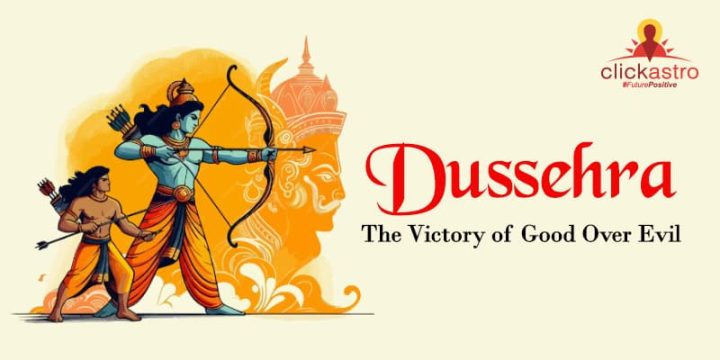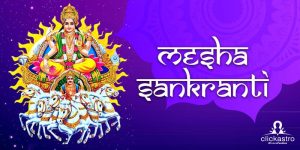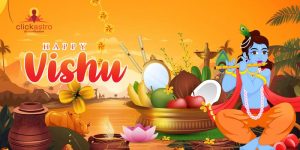Contents[hide]
Dussehra – The Victory of Good Over Evil
Dussehra is a huge festival in India, celebrated with fireworks and the customary burning of Ravana, the ten-headed Lord of Lanka. The name Dussehra comes from his ten heads, and the victory of Lord Ram, in vanquishing evil and freeing his wife Sita from the clutches of Ravana. The entire saga begins with Ravana being attracted to Sita, and luring her out of the protecting boundary created by Lord Ram’s brother, Lakshman. Once Sita is out of the Lakshman Rekha, Ravan takes the opportunity to kidnap Sita and takes her to his kingdom Lanka, where he holds her captive and attempts to win her affection. Lord Rama rescues Sita from the palace of Ravana and returns to a hero’s welcome in his Kingdom of Ayodhya, along with Lord Hanuman and his brother Lakshman. In commemoration of this victory, and the battle between good and evil, the Dussehra celebration sees the burning of enormous dummies of King Ravana, especially in the northern parts of India. In some places, the effigies of Ravana’s brother Kumbhakarna and son Meghanad are also burnt. The festival is also made lively with dance, drama and musical plays of Ramlila, which depicts the story of Ramayana. This day is the victory celebration of all that is good in life, like freedom, love, loyalty, valour, and brotherhood, as seen in the mythological epic Ramayana. Dussehra falls at the fag-end of the Navaratri festivities. The tenth tithi that falls on the Shukla Paksha (waxing phase) during the month of Ashwin is celebrated in India and the world over as Vijayadashami. This day has been witness to a victory of humongous proportions on two separate occasions of Dharma over Adharma in ancient history. Traditionally, this day is celebrated as the culmination of the 9-day Durga Navratri Puja, which heralds the season of Sharad or winter.Multiple threads of spiritual significance from ancient history come together to create a vibrant atmosphere on the occasion of Vijayadashami. This is the day that is universally celebrated as the day when good triumphed over evil. The most famous of them is the victory of Lord Rama over King Ravana. In an even earlier period, Goddess Durga eliminated from existence the Demon Mahishasura on this same day. Therefore, Dussehra or Vijayadahsami is a day of great celebration everywhere in India, as well as the world, wherever Indians have made their mark. Given Goddess Durga’s victory over Mahishasura, this day is also spent in the worship and celebration of the nature of the feminine, with all its purity and innocence, and this practice is mostly followed by practitioners of the vedic tradition.The 2024 Vijayadashami falls on Saturday, October 12.
Devotees of the Hindu religion, who believe in Goddess Durga and Lord Ram, observe vrat or fast during the Navratri Durga Puja period. They break their fast on Ashtami or the eighth tithi and observe Kanya Puja on the next or ninth day. The last puja of Navaratri is the Parana, during which devotees complete their fast and partake in the consumption of proper food. Since this was the day when evil was slain at the hands of the good, Navratri Parana is considered an auspicious day on which new beginnings can be made. All sorts of new businesses or endeavours are launched on this day, as it is considered extremely auspicious. Kanya Puja is a special ritual for Navratri Parana. As per Vedic culture, young girls are believed to be the form of Goddess Durga in its truest form. On this day, people usually worship nine young girls representing the nine forms of Goddess Durga.
If you wish to follow Kanya Puja Vidhi, then you should do the following –
- Invite nine girls and a boy to home for the puja
- The girls represent the nine forms of Durga, and the boy represents Bhairon (Shiva)
- Wash their feet with clean water and wipe them with a cloth.
- Apply a tilak to the foreheads of the children and pour akshat over them (mixture of raw rice and turmeric).
- After that, do aarti.
- After that, the children are served food
- After that, Dakshina is given, and blessings are sought
Dussehra Celebration and Rituals
Now that you know the significance of Dussehra, let us see how the festival is celebrated in different parts of the country. A special puja is performed as part of Dussehra celebrations by devotees to ensure happiness, health, wealth, and prosperity in life. Goddess Durga is worshipped during this puja. Taking part in Dussehra Puja is known to gain the devotee blessings from the divine. It bestows happiness and prosperity in the family. It fulfills the wishes and desires of the devotee and blesses him or her with increased wealth. Performing Dussehra Puja also protects the person from the spite and malignant intentions of others.
Here are some of the rituals you can observe during the Dussehra Puja.
- Goddess Durga is worshipped in the North-East or the Eastern direction of the house. From there, she can control the nine planets in a horoscope.
- Chant Durga Suktam after ascertaining the direction of worship. This mantra will ward off all negative energies at home.
- After chanting the Suktam, the idol of Goddess Durga is placed facing eastwards.
- Colorful Rangolis are laid out to bring positive energy into the home. Dark colors, especially black, are avoided while laying out the Rangoli
- A string of mango leaves and marigold flowers are hung across doorways to invite luck, happiness, and success to your home
- It is believed that worshipping the Shami Tree on this day can please Lord Shani and get his blessings. This will also bring devotees happiness and resolve their problems
- To give Green Gold (Leaves of Apta Tree) is considered lucky and brings happiness and success to devotees.








Your blog post about Dussehra was incredibly informative to me. Your description of the festival’s significance and traditions was very engaging, and I appreciated your cultural insights, which helped me better understand it. Thank you for sharing this valuable information with us!